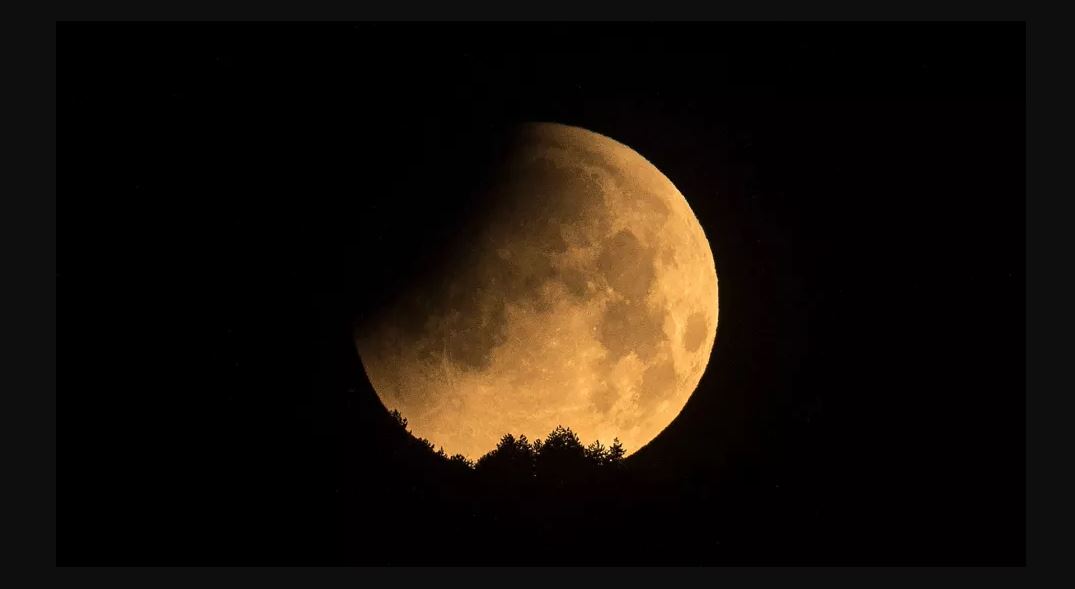On May 5, A Lunar Eclipse Will Occur And It's Important To Know What To Expect
On May 5, a lunar eclipse will occur and it's important to know what to expect. Although the moon will not completely disappear, its appearance will darken during the eclipse.
Author:Dexter CookeReviewer:Camilo WoodMay 03, 202313.3K Shares702.2K Views

On May 5, a lunar eclipse will occur and it's important to know what to expect. Although the moon will not completely disappear, its appearance will darken during the eclipse.
This astronomical event will be visible from any location where the moon is above the horizon, including Antarctica, Asia, Russia, Oceania, and Eastern and Central Africa. The eclipse will commence at 11:15 EDT a.m. (1515 GMT) and reach its peak at 1:24 p.m. EDT (1724 GMT), concluding at 3:32 p.m. EDT (1932 GMT) when the moon emerges from the Earth's shadow.
However, individuals in North America, South America, and most of Europe will not be able to witness this event as the moon will be situated below the horizon throughout the time when the Earth is in the shadow of the moon.
Penumbral eclipses occur when the Earth passes between the sun and the moon, causing the three celestial bodies to align in a straight line. As a result, the shadow of our planet falls on the surface of the moon, blocking the light from the sun.
Unlike solar eclipses, these events can be subtle and challenging to observe. During a penumbral eclipse, the moon enters the outer region of the Earth's shadow, known as the penumbra.
In this area, the Earth partially covers the sun's disk, resulting in less light reaching the moon. Consequently, the moon appears dimmed but still illuminated.
Penumbral eclipses can be difficult to observe as the effect is barely noticeable and can only be seen through controlled photographs or by individuals with keen eyesight. However, in rare events, the entire lunar face moves into the penumbra, causing a more significant dimming effect that can be seen without aid. These are known as total penumbral eclipses, but they are infrequent as the moon is likely to move into the darker inner part of the Earth's shadow, called the umbra, resulting in a partial lunar eclipse.
The last time the contiguous U.S. witnessed a penumbral eclipse was on November 30, 2020, and the next occurrence for this region will be on March 25, 2024. If you want to observe the features of the moon up close during an eclipse or any other time, our guides on the best telescopes and binoculars are a great place to start.
Conclusion
For those in the path of the eclipse who wish to take photographs, our guide on how to photograph a lunar eclipse will be useful. Additionally, our guide on photographing the night sky and the best cameras and lenses for astrophotography provide helpful tips and recommendations.
Jump to

Dexter Cooke
Author
Dexter Cooke is an economist, marketing strategist, and orthopedic surgeon with over 20 years of experience crafting compelling narratives that resonate worldwide.
He holds a Journalism degree from Columbia University, an Economics background from Yale University, and a medical degree with a postdoctoral fellowship in orthopedic medicine from the Medical University of South Carolina.
Dexter’s insights into media, economics, and marketing shine through his prolific contributions to respected publications and advisory roles for influential organizations.
As an orthopedic surgeon specializing in minimally invasive knee replacement surgery and laparoscopic procedures, Dexter prioritizes patient care above all.
Outside his professional pursuits, Dexter enjoys collecting vintage watches, studying ancient civilizations, learning about astronomy, and participating in charity runs.

Camilo Wood
Reviewer
Camilo Wood has over two decades of experience as a writer and journalist, specializing in finance and economics. With a degree in Economics and a background in financial research and analysis, Camilo brings a wealth of knowledge and expertise to his writing.
Throughout his career, Camilo has contributed to numerous publications, covering a wide range of topics such as global economic trends, investment strategies, and market analysis. His articles are recognized for their insightful analysis and clear explanations, making complex financial concepts accessible to readers.
Camilo's experience includes working in roles related to financial reporting, analysis, and commentary, allowing him to provide readers with accurate and trustworthy information. His dedication to journalistic integrity and commitment to delivering high-quality content make him a trusted voice in the fields of finance and journalism.
Latest Articles
Popular Articles